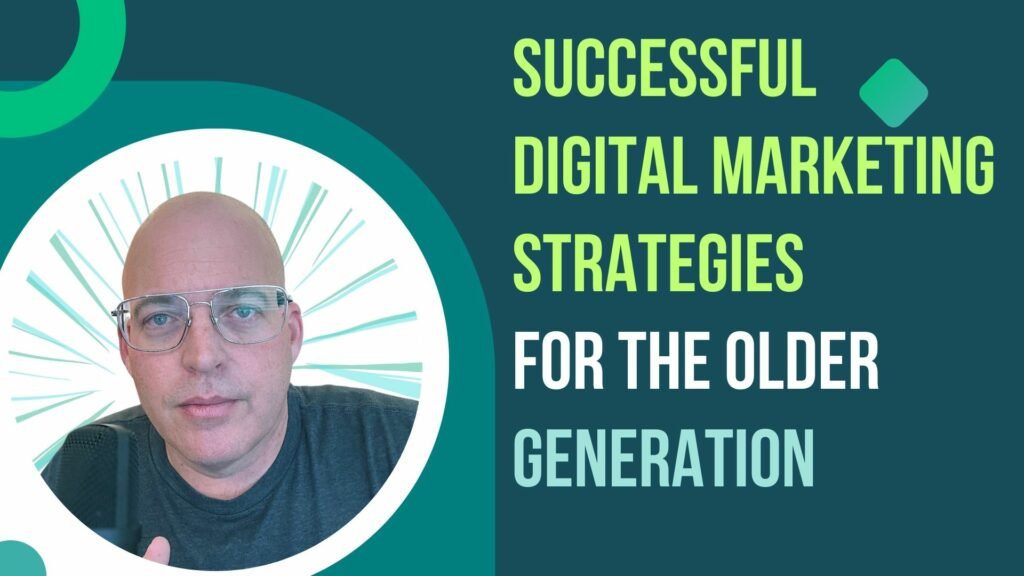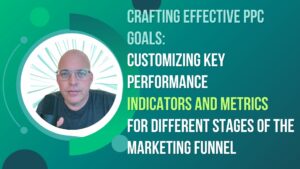The commonly held stereotype that seniors are not tech-savvy is rapidly becoming outdated. With more older adults getting comfortable with smartphones, tablets, and computers, the number of tech-savvy seniors is growing. They use technology for basic communication and engage in Digital Marketing Strategies like online shopping, social networking, and content creation. This shift allows businesses to connect with a more digitally engaged demographic than ever before.
The second compelling reason for targeting older adults in your digital marketing strategies is the untapped market potential coupled with substantial spending power. Thanks to years of saving and investing, older adults often have more disposable income than other age groups. They are also more likely to have brand loyalty after a positive buying experience. Thus, businesses can tap into a lucrative, often overlooked market by targeting older adults, creating a win-win situation for both parties.
Understanding the Older Adult Demographic
Age Range and Generational Differences
The older adult demographic is not a monolithic group; it encompasses a range of ages, from Baby Boomers to the Silent Generation. These different generations have unique historical backgrounds, cultural influences, and preferences, making it essential to tailor your marketing strategies accordingly.
Varied Tech Proficiency Levels
Tech proficiency among older adults is diverse. While some may struggle with basic online tasks, others are quite comfortable navigating the digital world, from social media to online shopping. It’s crucial to identify these proficiency levels to design marketing strategies that are accessible and user-friendly for the entire spectrum.
Common Online Behaviors and Interests
Like any other demographic, older adults have specific behaviors and interests regarding online activity. Many engage in social media to stay connected with family. Some shop online for convenience, and others may be interested in reading news or articles relevant to their lifestyle. Recognizing these common behaviors can guide the focus of your digital marketing strategies.

Market Research and Data Gathering
Surveys and Interviews
Collecting firsthand data through surveys and interviews can provide invaluable insights into the needs and preferences of older adults. By asking specific questions about their online behavior, product preferences, and pain points, you can tailor your marketing campaigns more precisely to meet their needs.
Analyzing Existing Customer Data
Analyzing existing customer data can be a goldmine of information if you’ve already engaged with older adults through your business. You can identify trends, such as popular products or services, times of high engagement, and preferred contact methods. This can provide a strong foundation upon which to build future marketing strategies.
Benefits of Using Analytics Tools
Analytics tools offer a comprehensive way to monitor how well your marketing strategies are performing. From tracking web traffic to analyzing consumer behavior, these tools can provide data-driven insights invaluable for refining your approach. They can even help you identify previously unnoticed opportunities for engagement or areas needing improvement.
Designing a User-Friendly Online Experience
Importance of Accessibility
Accessibility is not just a nice-to-have feature; it’s necessary, especially when marketing to older adults. Features such as larger text sizes, high-contrast color schemes, and audio descriptions can make it easier for seniors to interact with your digital platforms, increasing engagement and conversions.
Mobile-Responsiveness
With a growing number of older adults using smartphones and tablets, having a mobile-responsive design is no longer optional. A site that is easy to navigate on various screen sizes ensures you don’t lose potential customers who prefer mobile devices for browsing and shopping.
Easy Navigation
Older adults may not have the patience to dig around a complex website to find what they’re looking for. Therefore, a simple, intuitive navigation system is key. Menus should be clearly labeled, search features should be straightforward, and essential information should be readily accessible, not buried under layers of links or tabs.

Content Creation and Messaging
Types of Content That Resonate
Content that solves problems or enhances the lives of older adults resonates well. Educational articles, how-to guides, and video demonstrations can provide value while subtly promoting your product or service. Consider storytelling elements that evoke nostalgia or connect emotionally to engage this audience more deeply.
Language and Tone
When creating content for older adults, clarity and straightforwardness are key. Complex jargon or overly technical language can alienate your audience. A conversational tone can make the content relatable and engaging.
Use of Images and Multimedia
Visual elements can greatly enhance content, but they should be used thoughtfully. Large, clear images, short video clips, and easy-to-read infographics can make information more digestible and enjoyable. However, avoid clutter or overly busy designs that confuse or overwhelm older users.
Social Media Engagement for Digital Marketing Strategies
Popular Platforms Among Older Adults
Facebook remains a popular platform for older adults, with other platforms like Instagram and Pinterest gaining traction. Understanding how the target audience spends their time can guide you on where to focus your social media marketing efforts.
Types of Posts That Get More Interaction
Human-interest stories, nostalgic photos, and interactive content like polls or quizzes tend to get more engagement from older adults. These posts invite comments, shares, and likes, which can significantly boost your brand’s visibility on social media platforms.
Leveraging Community Features
Features like Facebook Groups or community forums can be valuable tools for fostering a sense of community among your audience. These spaces allow for more in-depth discussions, Q&As, and a way to offer special promotions or exclusive content to further engage your older adult audience.

Email Marketing
Best Practices for Subject Lines
Subject lines are the gateway to email content, so they must be compelling. For older adults, clarity often trumps cleverness. Straightforward subject lines that convey the email’s value can lead to higher open rates. Including a sense of urgency without being pushy can also be effective.
Email Frequency and Timing
Too many emails can overwhelm and annoy any demographic, older adults included. A well-timed, less frequent email schedule can yield better engagement. Additionally, considering when older adults are most active online can improve open and click-through rates.
Personalization Techniques
Personalization goes beyond just adding the recipient’s name to the email. Segment email list allows to send more targeted and relevant content. This personalized approach can make one feel valued and more likely to engage with the email.
Search Engine Optimization (SEO)
Keywords That Seniors Are Likely to Use
When it comes to SEO, understanding the search behavior of older adults is crucial. They are likely to use more straightforward and descriptive terms when searching. Think about what problems your product or service solves for them and what words they would use to describe those problems or solutions. Using those specific terms in your website’s content can improve your site’s visibility among this demographic.
Local SEO for Older Adults
Older adults often search for nearby services and businesses, especially if they’re less mobile or prefer face-to-face interactions. Thus, optimizing your website for local search can be particularly beneficial. This can include creating location-specific content or ensuring your business is listed in online directories.
Backlink Strategies
For targeting older adults, consider getting backlinks from sites they frequent, such as retirement planning websites, health and wellness blogs, or community centers. Such targeted backlinking improves SEO and positions your business as a trusted resource.

Paid Advertising
Platforms That Yield Better ROI
Selecting the right advertising platforms can significantly affect your return on investment (ROI). For older adults, platforms like Facebook and Google can be particularly effective due to their large user bases and robust targeting options. Google’s search ads are especially helpful if your keyword research is well-aligned with the queries older adults are making.
Ad Copy and Visuals
The ad copy and visuals must resonate with older adults to capture their attention. Use clear and concise language that conveys the benefits of your product or service. Visually, consider easily read and comprehended designs, avoiding overly complicated or flashy elements that might distract or confuse this demographic.
Budgeting and Tracking
Paid advertising can quickly become expensive, so budgeting is an important consideration. Start with a modest budget, closely monitor performance metrics, and adjust accordingly. Tools like Google Analytics can offer detailed tracking to help you understand what’s working and needs refinement. This data can be valuable in optimizing your budget for better ROI.
Monitoring and Metrics
Key Performance Indicators (KPIs) to Track
When tracking efforts for older adults, focus on KPIs that truly matter. This might include metrics on your website.
A/B Testing Methods
A/B testing allows comparison of two versions of an ad, email, or webpage to see which performs better. For example, you could test two email subject lines or landing page designs. By examining how each version performs on your KPIs, you can refine your strategies for better outcomes.
Feedback Loops and Customer Reviews
Encouraging customer feedback and reviews can provide qualitative data to supplement your quantitative metrics. Pay attention to comments and reviews to glean insights into what customers appreciate and what they feel needs improvement. This information can be invaluable for fine-tuning your strategies and serve as testimonials to attract new customers.

Future Trends and Adaptability
Upcoming Technologies like Voice Search and AI
Voice search and artificial intelligence are becoming increasingly prevalent, and older adults are also beginning to adopt these technologies. Integrating voice search optimization into your SEO strategies can help you stay ahead of the curve. Additionally, AI can automate customer service tasks or personalize user experiences, making your service more accessible and appealing to a demographic that values convenience and simplicity.
Strategies to Stay Ahead
To stay ahead, it’s necessary to remain adaptable and be willing to pivot your strategies as new technologies and trends emerge. Regularly revisiting your marketing plan, attending industry seminars, and monitoring consumer behavior can help you adapt more quickly. Building a flexible marketing infrastructure that easily integrates new tools or platforms will also position you to take advantage of new opportunities.
Challenges and How to Overcome Them
Common Obstacles
Some challenges in marketing to older adults include overcoming technological barriers, combating stereotypes about this demographic, and dealing with data privacy concerns. For example, older adults may have visual or motor impairments that make traditional online navigation more difficult. They might also be more cautious about online transactions due to fears about scams or data breaches.
Creative Solutions
To address technological barriers, consider simplified user interfaces and accessibility options like larger text or voice commands. Combat stereotypes by portraying older adults as active, savvy, and diverse in your marketing materials. To alleviate data privacy concerns, explain how personal data will be used and make opting in or out as straightforward as possible.

Recommendations and Next Steps
Action Items for Businesses
Start by conducting comprehensive market research to better understand the older adult demographic, focusing on their online behavior, needs, and pain points. Implement changes based on your findings—this could mean revamping your website for better accessibility or crafting more targeted email campaigns. Set up KPIs and tracking methods to measure the impact of these changes over time.
How to Scale Your Efforts
Consider scaling your efforts once you have a solid foundation and have seen positive results. This could involve expanding your advertising budget, automating certain marketing tasks to handle higher volumes, or broadening your content strategies to include new topics or mediums. The key is to scale responsibly, ensuring that the quality of your engagement doesn’t diminish as your efforts expand.
Navigating the Digital Age with Wisdom: Final Thoughts
Successfully marketing to older adults in the digital realm is less about age and more about understanding unique needs, behaviors, and challenges. By taking a comprehensive, data-driven approach, businesses can create tailored strategies that reach and resonate with this often-overlooked demographic. As you venture into this market, remember that adaptability is your ally, allowing you to evolve your methods as technologies and consumer behaviors change.

Frequently Asked Questions
What are the Best Platforms for Reaching Older Adults Online?
Facebook and Google remain effective platforms for reaching older adults due to their extensive targeting options and user-friendly interfaces.
How Can I Make my Website more Accessible to Seniors?
Improving text readability, simplifying navigation, and incorporating voice commands are a few ways to make your site more user-friendly for older adults.
Are Older Adults Using Social Media?
Many older adults are active on social media platforms, particularly Facebook, which offers community features that many find appealing.
What Types of Content Resonate Most with Older Adults?
Clear, informative articles and videos that offer solutions to problems or needs are often well-received. Visual content should be straightforward to understand.
What are Some Unique Challenges in Marketing to Older Adults?
When marketing to this demographic, overcoming technological barriers and addressing data privacy concerns are unique challenges.
How can I Incorporate Future Trends like Voice Search into my Strategy?
Voice search optimization ensures your online content can be easily found via voice queries. This includes using natural language and question-based keywords that older adults might use.








